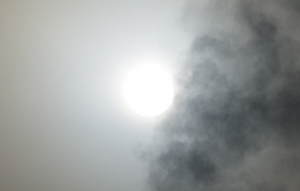 Print a Sign-In Sheet | Spanish Version
Print a Sign-In Sheet | Spanish Version
Diesel exhaust contains harmful chemicals, including toxic particles and hazardous gases. Some of the hazardous gases in diesel exhaust, such as nitrogen oxides, benzene, and sulfur dioxide, have been linked to cancer.
Health hazards
Inhalation of diesel exhaust is the most common means of exposure. As we breathe, the fine particles and toxic gases in diesel exhaust can enter the lungs. Short-term exposure to diesel exhaust can cause headaches, nausea, chest tightness, wheezing, coughing, and irritation of the eyes, nose, and throat. Exposure to diesel exhaust over long periods of time (usually years) may increase the risk of cancer. Workers with respiratory illnesses, such as bronchitis, emphysema, and asthma, may be adversely affected by chronic or long-term exposure.
Control of diesel exhaust
Substitution
When possible, replace diesel engines with propane engines. Propane burns more completely with fewer emissions than diesel fuel. This is especially important when operating equipment indoors, such as in warehouses or garages. Inhalation of combustion gases, such as carbon monoxide, carbon dioxide, and nitrogen oxides, can be harmful to your health.
Ventilation
If a substitution is not possible, utilize local exhaust ventilation to remove diesel exhaust. Local exhaust ventilation should include both intake and exhaust fans that remove diesel exhaust at its source. General ventilation air movement via open doors, open windows, roof vents, roof fans, and floor fans is helpful but less effective than local exhaust ventilation.
Safe work practice
Do not idle engines of diesel equipment not in use. Diesel equipment should be shut off and restarted as needed. Aside from safety concerns, high fuel costs make idling an expensive practice.
Conduct routine engine maintenance to maximize efficiency and minimize emissions. Diesel equipment that is producing visible smoky exhaust should be removed from service until the condition has been corrected.
Vehicles should be fitted with emissions controls (e.g., collectors, air cleaners, ceramic particle traps, etc.). Ensure regular checks of emissions controls, and replace controls when necessary. More Information Visit OSHA’s website for more information: http://osha.gov/SLTC/dieselexhaust/
KEMI does not assume liability for the content of information contained herein. Safety and health remain your responsibility. This information is to be used for informational purposes only and not intended to be exhaustive or a substitute for proper training, supervision or manufacturers’ instructions/recommendations. KEMI, by publication of this information, does not assume liability for damage or injury arising from reliance upon it. Compliance with this information is not a guarantee or warranty that you will be in conformity with any laws or regulations nor does it ensure the absolute safety of any person, place or object, including, but not limited to, you, your occupation, employees, customers or place of business.

